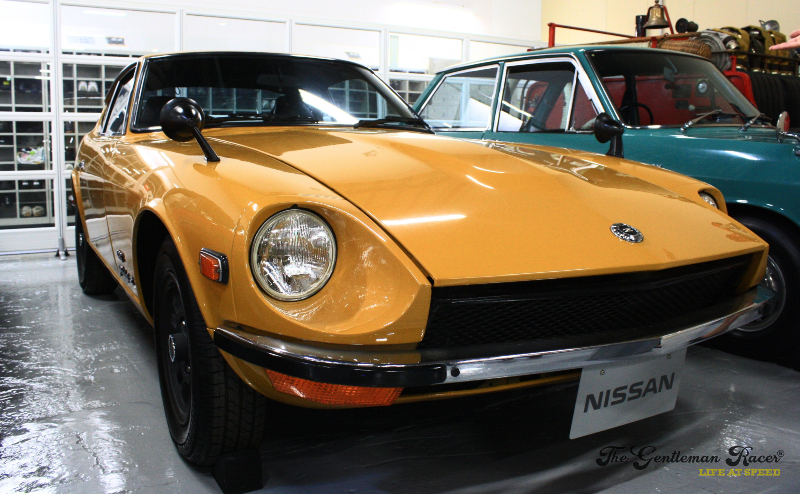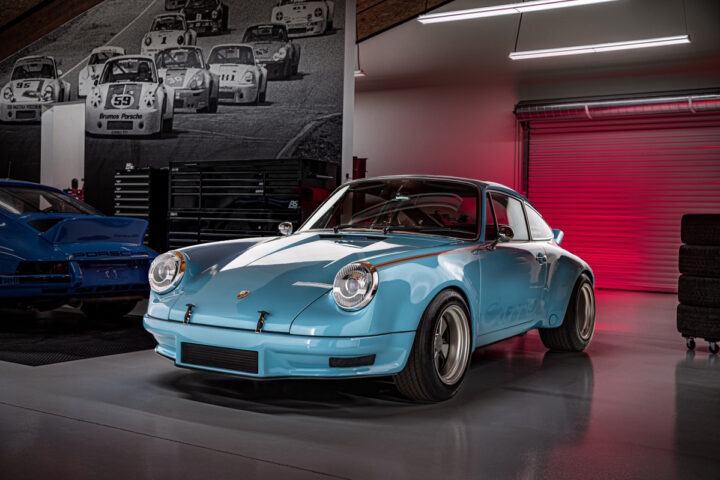by Michael Satterfield – Updated 12/30/2021
The 240Z is one of the most popular classic Japanese sports cars in the classic car market and with its sporty looks, great performance, and motorsports history it is easy to see why it has a growing fan base. If you have been wanting to learn more about the 240Z, here is a crash course on one of Japan’s most successful sports cars and why it is considered a legend today.
until 1978 with the 260Z and 280Z. The numbers 240, 260, and 280 refer to the
engine displacement in liters, 2.4 liters = 240. While they may look the same
as later S30 model Zs the 240Z was only built from 1970-1973 and are considered
by purists to be the most collectible. You can spot an early production, Series
1, car by the two small vents on the rear hatch, which were phased out by
mid-1970.
In Japan, the S30 was sold under the name Fairlady Z and came with a 2.0 L SOHC inline six. Several special Japan variants including the Z432 and Z432R which had a twin cam 2.0 L inline six-cylinder “S20” engine from the Skyline GT-R were never sold in the US. The only 240Z to be sold in Japan was the HS30-H which was sold as the Fairlady 240Z in Japan, more popularly known as the ZG or G-Nose.
The “G-Nose” Z, was a homologation special sold only in Japan as the Fairlady ZG, it was designed for Group 4 Racing and received the aerodynamic nose, over-fenders, and rear spoiler. The ZG was never sold outside of Japan however you could order a conversion kit from your local Nissan dealer. Only 500 would be built from 1971-72 and the Fairlady ZG would go on to win the 1972 Fuji Grand Champion Series. The Fairlady 240Z carried the same 151hp L24 series engine that was offered in the US spec 240Z, however, unlike US cars it was coupled to a 5-speed manual transmission.
Former Shelby American designer Peter Brock struck out on his own in the mid-1960s to form Brock Racing Enterprises, better known as BRE. Developing cars for Hino, Toyota, and Datsun. In 1969 BRE became the factory racing team for Nissan in the USA campaigning two Datsun 2000 roadsters in the SCCA DP Class. With Nissan needing to make an impression in the US market for their the team campaigned a 1970 240Z which racing driver John Morton would pilot to two National Championships.
Most people know about the Z’s sports car racing victories, but from 1970-1973 Nissan campaigned a factory 240Z rally team that would go on to win many class and overall victories, culminating in winning the World Rally Championship in 1973.
1970-1973 Datsun 240Z Specifications at a glance:
Production Numbers:
1969 – 3
1970 – 17,005
1971 – 40,219
1972 – 60,025
1973 – 51,332
US Base price 1970: $3,626 ($25,975.24 in 2021 adjusted for inflation)
Engine:
Displacement: 2,393cc
L24 inline-six engine, cast-iron block, alloy head, two valves per cylinder, seven-bearing crankshaft, SOHC, compression ratio 9.0:1; 7,000 Max RPM, Bore X stroke: 83 mm × 73.7 mm.
Twin Hitachi HJG 46W 44 mm SU-type carburetors
Power: 151 bhp at 5,600 rpm
Torque: 146 lb-ft at 4,400 rpm
Transmission:
Four-speed manual
Five-speed manual (Non-US Cars)
Three-speed automatic (1971+)
Brakes:
Front: 270 mm discs
Rear: 230 mm x 41 mm drums
Suspension:
Front: Independent with MacPherson struts, lower transverse and drag links, coil springs, telescopic dampers, anti-roll bar.
Rear: Independent with Chapman struts, lower wishbones, coil springs, telescopic dampers.
Steering:
Rack and pinion 2.7 turns lock to lock
Wheels:
4.5J-14 steel wheels with 175SR14 tires
Top speed: 125 mph
0-60: 8.0 Seconds
Original Exterior Color Options:
1970:
Universal Blue, Silver Metallic, Kilimanjaro White, Monte Carlo Red, Racing Green, New Sight Orange, Sunshine Yellow, and Safari Gold.
1971-1973:
Red, Lime, Avocado Green Metallic, Brown Metallic, Blue Metallic, Silver Metallic, Kilimanjaro White, and New Sight Orange.
Original Interior Color Options:
Black, White, Brown, Red, and Blue.




























